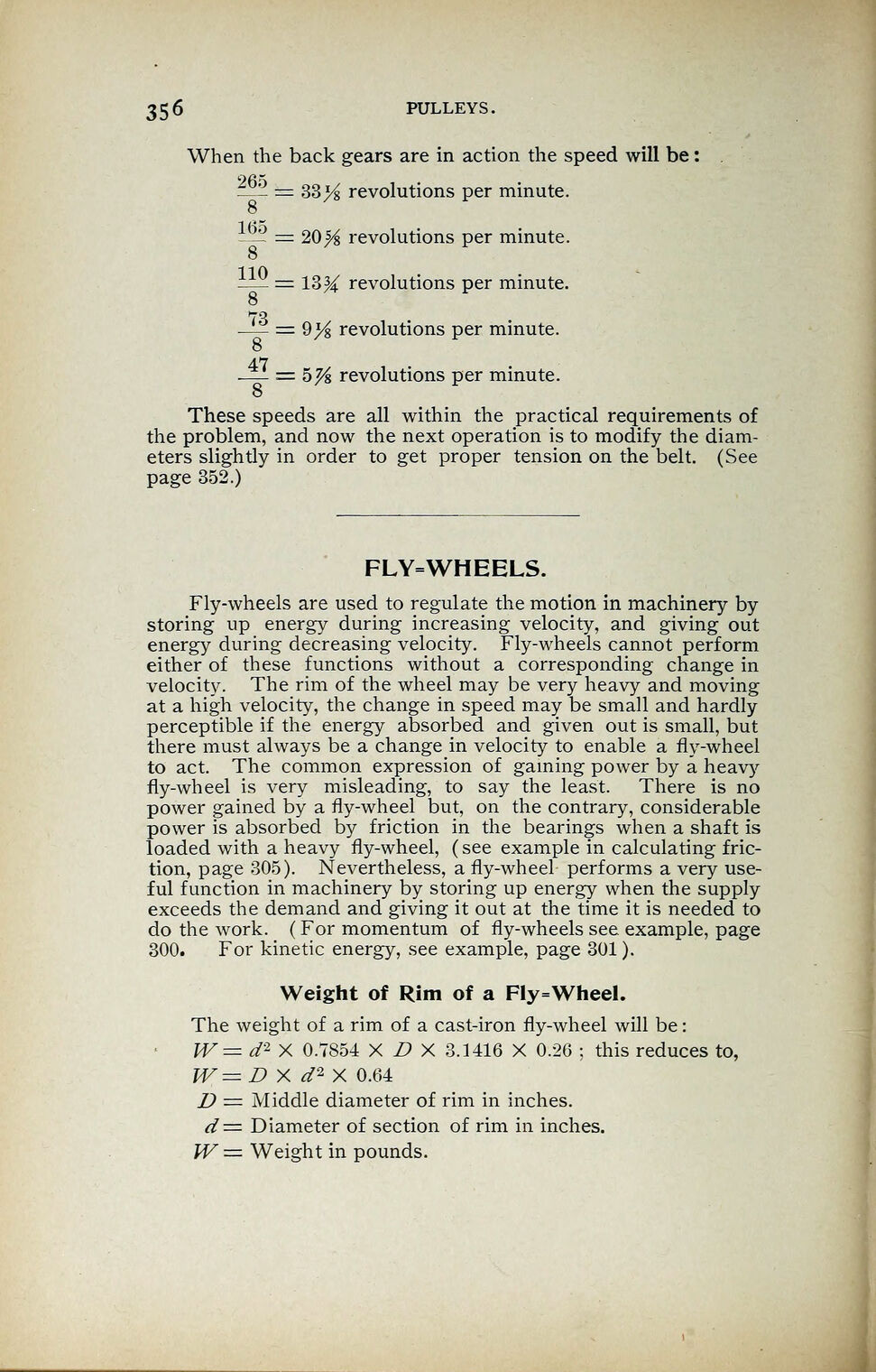
Full resolution (JPEG) - On this page / på denna sida - Pulleys - Stepped pulleys for back-geared lathes - Fly Wheels - Weight of rim of a fly-wheel

<< prev. page << föreg. sida << >> nästa sida >> next page >>
Below is the raw OCR text
from the above scanned image.
Do you see an error? Proofread the page now!
Här nedan syns maskintolkade texten från faksimilbilden ovan.
Ser du något fel? Korrekturläs sidan nu!
This page has never been proofread. / Denna sida har aldrig korrekturlästs.
356 PULLEYS.
When the back gears are in action the speed will be
:
zj! = 33^ revolutions per minute.
8
1 65
Jr_ = 20 ^ revolutions per minute.
8
= 13% revolutions per minute.
_L = §yi revolutions per minute.
8
= 5% revolutions per minute.
8
These speeds are all within the practical requirements of
the problem, and now the next operation is to modify the diam-
eters slightly in order to get proper tension on the belt. (See
page 352.)
FLY=WHEELS.
Fly-wheels are used to regulate the motion in machinery by
storing up energy during increasing velocity, and giving out
energy during decreasing velocity. Fly-wheels cannot perform
either of these functions without a corresponding change in
velocity. The rim of the wheel may be very heavy and moving
at a high velocity, the change in speed may be small and hardly
perceptible if the energy absorbed and given out is small, but
there must always be a change in velocity to enable a fly-wheel
to act. The common expression of gaining power by a heavy
fly-wheel is very misleading, to say the least. There is no
power gained by a fly-wheel but, on the contrary, considerable
power is absorbed by friction in the bearings when a shaft is
loaded with a heavy fly-wheel, (see example in calculating fric-
tion, page 305). Nevertheless, a fly-wheel performs a very use-
ful function in machinery by storing up energy when the supply
exceeds the demand and giving it out at the time it is needed to
do the work. ( For momentum of fly-wheels see example, page
300. For kinetic energy, see example, page 301 ).
Weight of Rim of a Fly=Wheel.
The weight of a rim of a cast-iron fly-wheel will be
:
W—tr1
X 0.7854 X D X 3.1416 X 0.26 ; this reduces to,
W=D X d2
X 0.64
D = Middle diameter of rim in inches.
d= Diameter of section of rim in inches.
W= Weight in pounds.
<< prev. page << föreg. sida << >> nästa sida >> next page >>